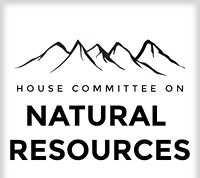Energy Department Releases Second Quadrennial Technology Review
Research Opportunities Highlighted in Report Lay Out Options for America’s Clean Energy Future
WASHINGTON, D.C. – September 15, 2015 – (RealEstateRama) — The Energy Department released its second Quadrennial Technology Review (QTR), which examines the current status of clean energy technologies and identifies hundreds of clean energy research opportunities that could support the effort to modernize the power sector as a whole, while also helping Americans to power their homes, businesses, cars and trucks more efficiently. The report finds that emerging advanced energy technologies provide a rich set of options to address the nation’s economic, security, and environmental challenges, but continued improvements in cost and performance are crucial to the large-scale deployment of these technologies.
“The energy sector in the United States has changed dramatically in recent years due to advances in clean energy technologies, increased oil and gas production and the increased risk to energy infrastructure from extreme weather, cybersecurity and other factors,” said Secretary of Energy Ernest Moniz. ”The Quadrennial Technology Review is intended to serve as a blueprint for the Energy Department, its National Laboratories and the public and private sectors as we all work toward additional future technology breakthroughs that can help to mitigate the risks of climate change, modernize our energy infrastructure and enhance our energy security.”
“No challenge poses a greater threat to our future than climate change, which is primarily caused by carbon pollution from energy use,” said Dr. John Holdren, Director of the White House Office of Science and Technology Policy. “The QTR makes clear that we have the technological know-how and innovative spirit to move to a low-carbon economy. It’s up to us to carry these opportunities through and make them a reality.”
Over the course of six technology chapters – grid modernization, clean power, buildings, manufacturing, fuels, and transportation – the QTR examines the current status of energy technologies and research opportunities to advance them in addition to key enabling science and energy capabilities.
In completing the review, a number of overarching themes emerged:
Researchers found that the nation’s energy systems are becoming increasingly connected through the internet and other technologies, which may provide a game-changing new paradigm for cost and emissions reduction.
The range of options available to meet the nation’s energy needs is increasing, and this diversification creates a more dependable energy system and offers consumers new choices.
The nation has embraced energy efficiency as a way to reduce energy use and costs, but substantial efficiency opportunities remain untapped.
Breakthroughs in next generation high-tech tools including x-ray light sources and supercomputers are helping scientists find new ways to deliver cheaper, faster clean energy innovation.
The QTR also highlights the dramatic changes that have occurred in the American energy system over the past four years. The nation has increased wind energy capacity by 65 percent, increased solar capacity 9 fold, and replaced some of our oldest, least efficient power plants with cleaner, more efficient ones. At the same time, vehicle gas mileage has increased to record levels. In the four years since the first QTR was released, the United States has also become the largest producer of oil and gas combined. By pursuing the research and development opportunities, as well as the untapped opportunities for greater energy efficiency highlighted in the QTR, the U.S. can move closer to its clean energy future.
NEWS MEDIA CONTACT
(202) 586-4940















